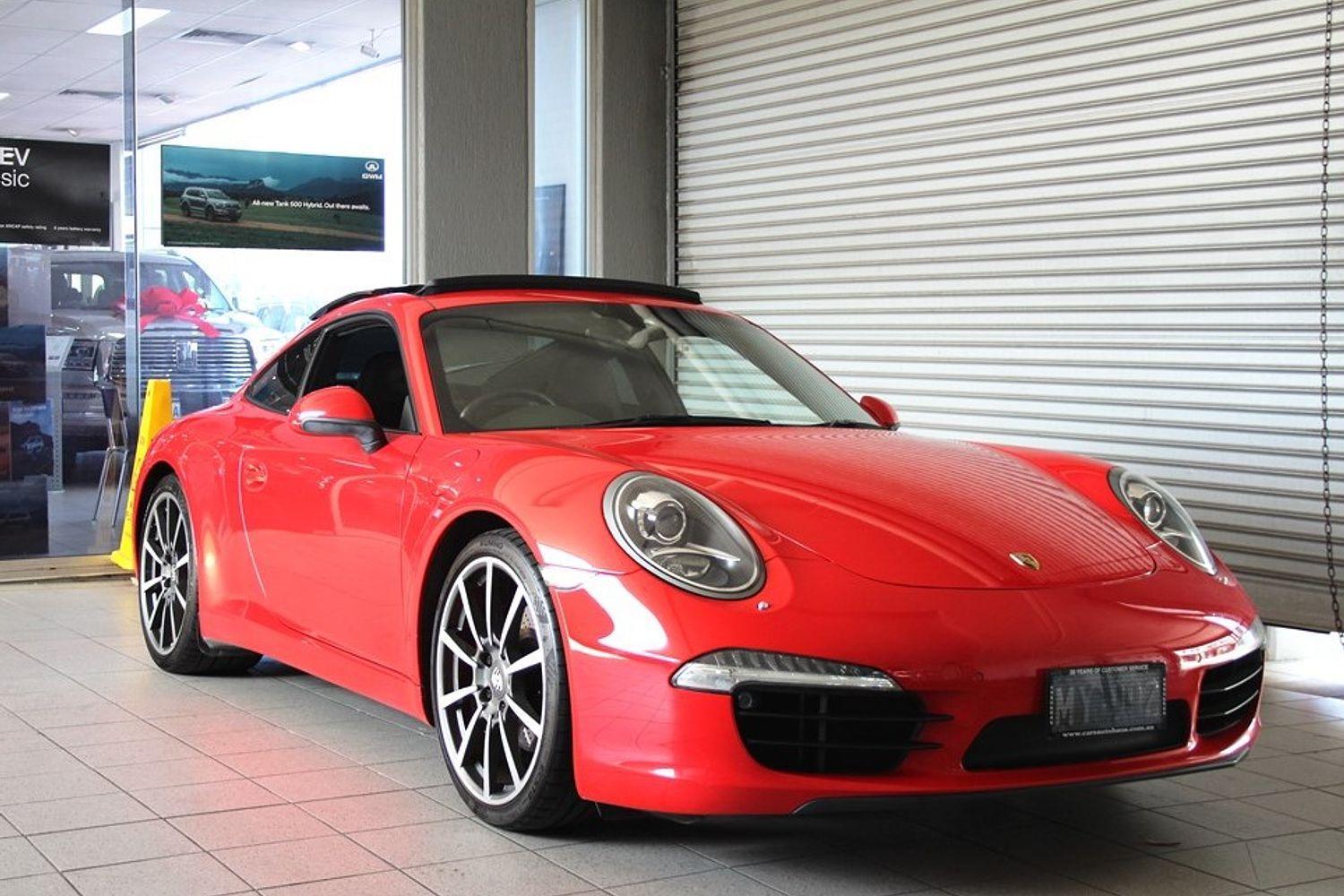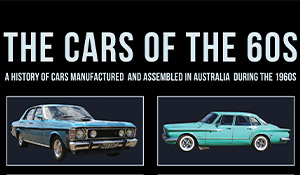1908 Black Model 30 delivery wagon
Working for JUST CARS, you come to appreciate the breadth and depth of automotive enthusiasm that’s present in this country.
You also learn to never to think you “know it all” when it comes to makes and models, as you’re sure to be made a fool of when something you’ve never heard of pops up. Such is the case with the vehicle featured, which came to my attention a few years ago via regular JUST CARS advertiser, Russell Holden of Old World Lamps and Tyres, who has a passion for single and two-cylinder veteran automobiles.
If you’ve no idea what this vehicle is, you’re not alone. What you’re looking it is a “high wheeler”, more specifically a Black ‘Model 30’ delivery wagon high wheeler that Russell found in the USA in 2011.
If neither a “Black” or a “high wheeler” are in your automotive encyclopaedia, read on.
High Times
Of the various vehicle classes and categories that have come into being since the creation of the automobile, few can claim to be exclusively American. The likes of sports cars, compacts, limousines, cyclecars, grand tourers and the like all had their origins in Europe or England before they rolled on American roads. The muscle car, of course, is a product of the good ol’ USA, as is the ‘pony car’ class spawned by the Mustang.
The ‘high wheeler’ automobile is another one of those American-made vehicle categories; a class that shone bright but briefly more than a century ago, but is forgotten today.
Toi understand the growth of the high wheeler, you have to first understand the automotive landscape in the US at the dawn of the last century.
In America, automobiles were embraced sooner and in greater numbers than arguably any other country; by the first decade of the 19th Century, their popularity was seeing them start to spread beyond the larger cities where most were used. Unfortunately, what good roads there were in America back then came to an end outside the larger cities.
“High wheelers were an answer to what were atrocious road conditions beyond major cities in the USA,” Russell explained.
As the name suggests, the defining characteristic of these vehicles was their large, cart-like wheels that could traverse the trails that left most conventional cars stranded.
Chicago-based Holsman is generally regarded as the first manufacturer of what could accurately be labelled a high wheeler, turning out their first model in 1903. Three years later, skyrocketing demand for the company’s vehicles saw dozens of other high wheeler builders spring up, all trying to cash in on the boom.
International Harvester would become one of the most popular and prodigious producers of these types of vehicles, and Studebaker went as far as building a prototype, but most high wheeler manufacturers were names you’ve likely never heard of.
Hunting for a High Wheeler
“After looking for some time for a high wheeler to add to our eclectic collection of cars, I was lucky enough to be put on to this Black Motor Buggy in California in 2011,” Russell recalled.
“It was a long wheelbase model, with the larger of the two motors available - 18-20hp or 22hp depending on which publication you read.”
Like many of their contemporaries, Black was only in the high wheeler game briefly; three years, to be exact. Their first catalogued models appeared for 1908 and the unit that Russell tracked down was from that debut year.
“The Black was produced in Auburn, Indiana, in the same factory as both the Kiblinger and McIntyre high wheeler buggies, sharing body styles and mechanical components.”
Distributed throughout North America, predominantly to rural areas, a few Blacks were also shipped to Australia when new, and one of those Australian-delivered vehicles still exists today.
The Black that Russell purchased proved to be a ‘Model 30’ delivery wagon, one of seven different models available in 1908, but proving that took some automotive detective work, as the unit Russell bought was missing its body, along with a number of mechanical components.
“After some research and information provided by the Horseless Carriage Foundation, this buggy’s heavier-grade, wider springs confirmed it was a commercial chassis - the Model 30 – as well as a ‘Southern Tread’ vehicle due to its slightly wider track.”
Getting hold of an original sales brochure revealed that the body design for the 1908 Model 30 was typical of the period, but with marginal power and the added weight of a commercial body, Russell questioned its practicality as a workhorse.
New Year, New Start
The Black arrived from the US just before Christmas, 2011, and the restoration commenced on the first day of 2012.
“With a ‘worst first’ approach to the restoration, the body construction was the initial task undertaken - as it really did not exist!” Russell laughed.
That aforementioned sales brochure enabled Russell to work out the body’s original dimensions, which he used to produce a full-size template to assist in the construction of the body.
“With this template sitting on the rolling chassis, a real assessment of the project could be undertaken, with an approach very conscious of weight,” Russell explained. “After all, this is a 2 cylinder 20hp buggy with solid tyres and a 2-speed planetary transmission, so it did not need to carry a 400kg body to slow it down!”
Built entirely from timber, as it would have been when new, the body construction started with a base designed to bolt on to the chassis rails. To these, cross braces were attached, then the uprights; the latter being gently curved at the sides and rear.
Cross ribs on the body provided fastening points for the 3-ply outer panels, while the rear doors were built with integral windows and hinges that allowed them to fold flat against the body.
The 3/16-inch glass used in those rear windows is the same as that in the cabin, but the rear window openings were actually narrower than those on the side, which required two different sets of bevelled glass panels to be cut.
“The tool box in front of the firewall is an interesting addition to the commercial Black bodies. Something optional on other Blacks, this provides an area for both storage and to place things on, table-like, when opened.”
On top, the roof is made up of wooden slats, covered in canvas, then foam, with weatherproof material on top.
To keep the rest of the body waterproof, the plywood outer panels were treated to three coats of epoxy resin, after which the body was set aside to cure.














Engine Good, Gearbox Bad
With the body virtually done, Russell turned his attention to the chassis and running gear.
“The car had spent many years in the salty air, just 250 yards off the Pacific Ocean, so there was considerable corrosion on the hard steel parts.”
After dismantling the chassis, it and the axles were sandblasted, etch primed and painted in tough, 2-pack gloss black before re-assembly.
Disassembly of the motor provided Russell with a pleasant surprise: “It had been subject to extensive works sometime in the past, with new white metal main and big end bearings, 20 thou oversized pistons and rings, new valves and guides, as well as heavily overengineered push rods and valve rocker units.”
Pointing to hone marks on the bore, Russell believes the motor was never started after that restorative work had been completed.
Following sandblasting and cleaning, this 100ci air-cooled twin was painted in heat proof black, then reassembled after the bearings and tolerances had been checked.
The good news with the engine was countered by bad news with the gearbox – it wasn’t there!
“The gearbox was missing altogether!” Russell laughed. “So, with the assistance of a friend who had recently imported another Black buggy, we pulled apart its gearbox for replication.”
Russell admits that building a gearbox from scratch was challenging and pushed the deadline out past the twelve months he’d originally planned to complete the project.
“After a lot of ‘learning’ on the lathe, I successfully managed to reproduce the 2-speed planetary ‘box, then the bands and rods to operate it.”
Other scratch-built mechanical parts included the engine timer (distributor) and pulley mechanism for the oiling system.
Wheels, Colour and Queensland
Moving back to the body, reed trim pieces were fitted over the joins of the various panel sections and above the windows. The body was then primed and painted in light blue, followed by darker blue on the larger body sections, with gold coachlines and the reed trimming finished in gloss black.
“The signwriting on the side panels duplicates the original Black Motor Co. letterhead.”
As purchased, the high wheeler was running the wrong wheels for a Model 30 – 38-inch diameter and not the correct 34-inch. So, with past experience sourcing wheels for veterans like this, Russell ordered new wheels from Witmer Coaches in Pennsylvania, who actually get Amish wheelwrights to produce them. Upon arrival, these were painted in complementary dark blue, with gold detailing picking up on the body’s coachlines.
With the new goal of having the Black completed in time for the 11th Biennial High Wheeler National Rally in June, 2013, at Bundaberg, Russell put in some long days and late nights, which saw the vehicle completed with one week to spare.
“We drove the Black down to the local inspection station. With no little satisfaction, it passed first go!”
That first drive revealed the limited vision of those decorative windows, so a pair of brass-framed mirrors were fitted before the high wheeler was trailered up to Queensland for the rally.
While driving a 100+ year old veteran can be challenging, the freshly-restored Black ran well at the Rally, and has since taken part in High Wheeler National Rallies in Hahndorf (2015 – featured in JUST CARS #239) and Orange (2017), as well as several local events.
Another High . . . and Another
Eighteen months after completing the restoration of the Model 30, Russell purchased another Black, a Model 12 runabout, and has just got hold of an early Kiblinger high wheeler, which is expected in the ‘Holden & Holden’ workshop in the near future.
The two Blacks currently in Russell’s possession represent a third of the total known of in Australia. In fact, we account for half of the twelve Blacks known to be in running condition worldwide.
“Today, high wheelers are something of a hot property in the veteran car market and we have imported several more over the last couple of years for customers eager to join this unusual group of avid motorists.
“Locating these unusual vehicles is not easy and prying them for older owners can be even harder,” Russell laughed, but he enjoys the challenge of finding these rare veteran automobiles and bringing them back to life.
“These vehicles are a lot of fun to drive and thankfully, there is a regular group who gather to drive and enjoy them.
“Hopefully, we’ll see more of these horseless carriages on the road more often.”
Words: Mike Ryan
Photos: Ben Hosking
































